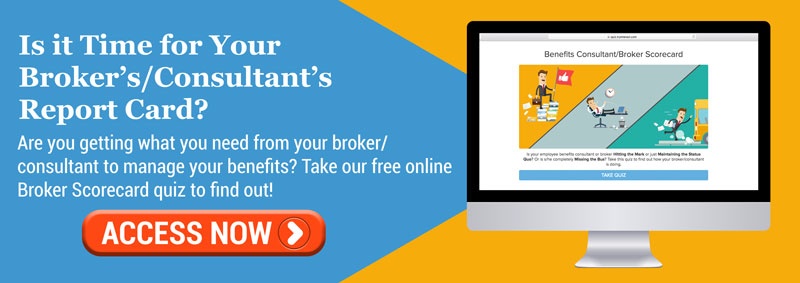In a recent informal survey, we asked some of our customers what’s their biggest frustration about communicating benefits to employees. Their answers revolved around two main issues:
- Employees ignore the emails they send to them.
- (Not) surprisingly, our research uncovered this: 62% of employees want to receive benefit information from their employer electronically, but only 34% claim to pay attention to all the materials they receive!1
- Some employees have trouble enrolling on time.
- HR seems to spend a frustrating amount of time following up with employees via email and phone to make sure they meet their enrollment deadlines.
So why do we have this problem?
Data has shown that people spend an average of 10 hours researching a new car purchase; five hours planning a vacation; four hours shopping for a new computer, and two hours buying a TV.2 But when it comes to shopping for health, dental, life, and disability insurance:
People (56%) spent less than 30 minutes researching their benefits and over one-third (34%) spent less than 15 minutes!3
15 minutes!
Employees agree that having a benefits package is important to them but researching, reviewing, and selecting a plan is a real downer. Certainly, no one really wants to consider the possibility of sickness or injury, disability, or death. They dread open enrollment so much that:
- 38% would rather clean out their email inbox
- Nearly 1 in 4 (23%) would rather clean their toilet
- 18% would rather do their taxes3
Why is this such a daunting task?
Stress
Choosing benefits is stressful. Why? Because we know it’s IMPORTANT, but it’s challenging. When we do not have the skills to attend to a task that we know has critical significance, the result is stress.
- 49% of employees say making health insurance decisions is always "very stressful" for them
- 41% also find the open enrollment process "extremely confusing”
- 73% of employees have trouble understanding what is covered by their policies1
So it comes down to employees wanting to make good decisions for themselves and their families, but because the process is so confusing, they would rather clean their toilet! When it gets too complicated, they shut down, sometimes making quick, rash decisions about something that’s really important that they may not fully understand. Sadly, 20% of employees regret the benefits choices they make.1
So how can schools, cities, and counties help their stressed employees deal with complex information overload? Here are some recommendations:
This isn’t an easy problem to fix (is there really a solution?), but here are some ways that schools, cities, and counties have found useful in helping their employees make better decisions.
- Research Decision Support Tools - Integrating some type of decision support tool can help employees skip the “tortuous” process of reading through traditional benefit materials. With decision support tools, employees are simply walked through a series of questions about their health needs, finances, and risk tolerance, all designed to help them arrive at a logical choice in the end. There are various tools available – some better than others.
- In-Person Meetings – Depending upon the size of your employer and your benefits department, some have found that in-person (both one-on-one and group) enrollment meetings do the trick.
- Keep Plan Choices Simple – Another recommendation is to simplify plan designs. Are employees having trouble making a decision because you are giving them too many options? Are you able to eliminate some of their choices? The more choices, the less chance people will make one. In fact, research has shown that a quality of a person’s decision went down the drain when they were presented with too many options.
For example: Instead of offering employees the choice of life insurance in $10,000 increments up to $150,000 – how about just giving them 3 choices - $50,000, $100,000 and $150,000? Check a box – they are done! For health insurance, perhaps all plan options have the same benefits, just different deductibles. Call your agent – ask them what can be done to simplify the benefit options while still matching your bargained contracts (if any).
- Clear and Concise Communication – Have you ever had to follow directions that were badly translated from another language and it was hard to follow? It really makes you appreciate clear and concise writing. The same goes for benefit communication. According to the studies cited above – you only have 15-30 minutes of their time – that’s it! Keep in mind it’s an often long process to write something that is simple and clear. Here’s some down and dirty writing tips:
- Determine what your goal is with your email or other benefit communication. After writing a first draft, remove any and all words, sentences, and phrases that do not support your goal. For example, if your goal is to have them fill in a form and return by a certain date, perhaps that is all your email should say.
- Make it skimmable – most people skim their email, not read it. That means: bold headlines, short, digestible snippets of information with links for those who need more detail, important items in red, etc.
- Have your teenager read your email before you send it – if they can understand it, then you are probably onto something.
- Edit your communication at least 3 times before releasing.
- Avoid insurance lingo or jargon. Do your employees understand what “premium” means? How about use the word “cost” instead? Same goes for words like “elimination period,” “deductible,” “in-network,” etc.
- List information in steps (Step 1, Step 2, and Step 3)
- A/B Testing - When it comes to employees ignoring your email, it’s often a very relatable offense. Our inbox piles up faster than the speed of light. We delete emails without reading them, partially skim some, and pick and choose what to respond too. If you’re struggling to get your employees to open/read your emails, consider doing some A/B testing.
Here’s how it works. Create two slightly different emails (Email A and Email B). Next, divide your list of recipients (chosen randomly) in half and create two lists. Send Email A to List 1 and send Email B to List 2. Check to see which email got better results. Keep testing until you have an email that you know will work.
Tips for testing: Make sure to test only one of these items at a time.
- Subject lines – Does using words like “urgent”, “reminder” or “action required” get you results? How about capitalizing a word in the subject line? How about providing the deadline right in the subject line, “Reply by X date”?
- Content – See if a change in design, wording, or layout makes a difference. Try simplifying the message.
- Timing – Do you get a better response if you send a reminder one week prior instead of two weeks? Is there a certain day or time of the week that gets better results?
- Consequences – What happens if they don’t respond? Do their benefit choices default to the choices they had the previous year? Stating consequences does not mean shaking a finger in their face. It can just be stated simply, such as, “Benefit choices will default to X unless the form is received by x date”.
Now it’s your turn. What employee benefit communication issues do you struggle with? What tips have you found that helped? Comment and share below!
1 https://www.shrm.org/resourcesandtools/hr-topics/benefits/pages/open-enroll-benefits-confusion.aspx
3 https://www.aflac.com/about-aflac/newsroom/press-release-story.aspx?rid=729
National Insurance Services is not a law firm and no opinion, suggestion, or recommendation of the firm or its employees shall constitute legal advice. Readers are advised to consult with their own attorney for a determination of their legal rights, responsibilities and liabilities, including the interpretation of any statute or regulation, or its application to the readers’ business activities.







